Things to do in France
Every country has its outstanding and special attractions. Goway has selected its Top 14 Things to Do in France (not in any particular order) for you to enjoy on your visit to this destination.

In Paris
Paris has many iconic sites. For simplicity’s sake, it is better to categorize them.
Art Galleries and Museums
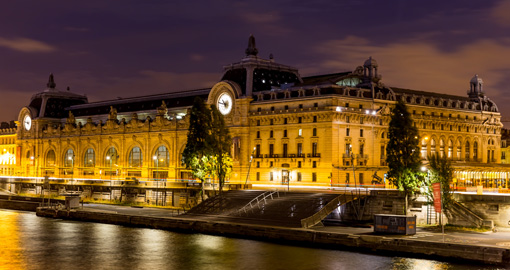
The principal art galleries to visit on Paris tours are The Louvre with its traditional art treasures which include Leonardo da Vinci’s Mona Lisa and the statue of Venus de Milo, and the Musee d’Orsay with its wonderful collection of Impressionist and post-impressionist masterpieces housed in a converted railway station, the Musee Rodin where Rodin lived at the end of his life with its collection of the sculptor’s work in rooms and the garden including the Burghers of Calais, the Musee de l’Orangerie which contains works by Monet, Matisse, Renoir and Rousseau and the Georges Pompidou Centre which has displays of modern and contemporary art collections ranging from Picasso, Matisse and the surrealists to the latest trends in installation and video, all contained in a colourful, hi-tech building.
Churches of Prominence
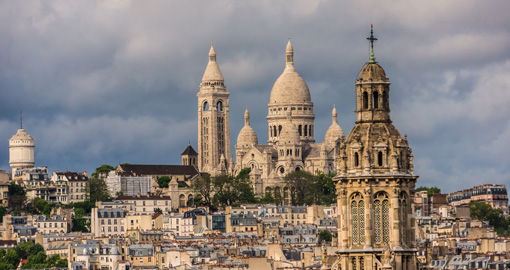
The stunning and remarkable Notre Dame Cathedral is not only a landmark on travel to Paris situated on an island in the middle of the River Seine, but it is also perhaps the most famous Gothic church anywhere. Completed in the 14th Century, It has been associated with Joan of Arc and the fictional work by Victor Hugo, “The Hunchback of Notre Dame”. Inside are displays of artwork, furniture and many other treasures. The Sacre Coeur Basilica cannot be missed as it is perched high up on the top of Montmartre. Totally recognizable because of its dramatic circular dome, it is fairly new to Paris as the current structure only dates back to 1919. From the basilica, one has a breathtaking view of the rooftops of Paris with the Eiffel Tower in the distance. The Eglise de la Madeleine resembles the Parthenon in Athens. It was not a church until Napoleon decided it should be. It has 52 Corinthian columns on the façade and inside is a remarkable statue of Joan of Arc. It is also a venue for concerts.
Palaces and Royal Residences
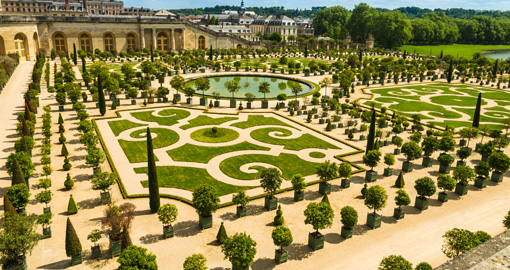
The Chateau de Versailles is located just south of Paris and was Louis Xlll’s (1601-1643) old hunting lodge which was transformed into a palace by his son, Louis XlV (1638-1715). It was a royal palace up until the French Revolution in 1789 and was the World’s Largest Royal Domain. It took 36,000 workers to construct the palace, along with its gardens. It has 700 rooms and over 67 staircases. Inside this opulent building, the rooms contain a collection of paintings and sculptures depicting the history of France. The Garden of Versailles is one of the largest gardens in the world with 210,000 flowers and 200,000 trees planted annually. The gardens are simply breathtaking and are designed in a formal way with geometrically aligned terraces and ponds. There are 50 spectacular fountains and approximately 400 sculptures. Also just south of Paris is the 16th Century Chateau de Fontainebleau which is an exquisite example of French Renaissance architecture. Once again, it has been the home of royalty and Napoleon lived here for a while. It is considered one of the most beautiful chateaux in France. The formal gardens are immense and can be toured by horse-drawn carriage. You can see peacocks which roam freely in some areas and the largest tennis court in the world, King Henry lV’s Jeu de Paume.
Chartres Cathedral
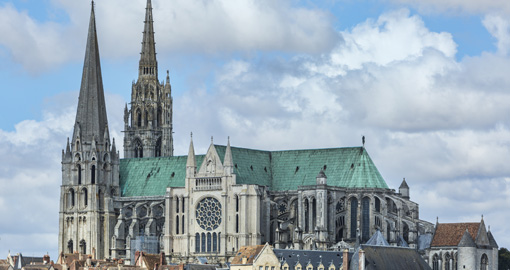
One hour south of Paris is Chartres Cathedral, dating back to the 13th Century, one of the finest examples of French Gothic architecture and, arguably, the most beautiful cathedral in France due to its structural elements including flying buttresses. However, its major claim to fame is its wonderful stained-glass windows, first designed in the 12th and 13th Centuries. Also remarkable is the fact that no direct light enters the building except through the stained-glass windows. The interior of Chartres cathedral is also remarkable as the nave is wider than any other cathedral in France.
The Loire Valley
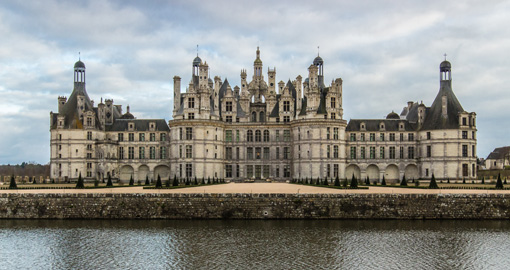
The reasons to visit this area on trips to France are numerous. 2 hours by road from Paris, It is home to a large number of superb chateaux (a cross between a castle and a stately home), it offers history, culture, and medieval towns, and it is the third leading wine district in France. It has been described as “The Garden of France” due to the many vineyards and fruit orchards found along the river banks. It is, as an entity, a UNESCO World Heritage Site. There are over 300 chateaux in the Loire Valley. The first to be built was in the 10th Century after which, they were continually built over the next 500 years, the latter ones definitely being the more splendid and better-preserved. They were built not only for French royalty but also for French nobility. Many of the chateaux were built on top of hills, some overlooking the river.
Mont St. Michel

Mont St. Michel is an 11th Century abbey located off the coast of Normandy on a small, rocky island reached by a sand causeway when the tide is out and rises dramatically up from the sea. To see it is a worthwhile experience on trips to France. It was once a small monastery, a fortification and a prison. Today, the island has a population of around 50 people.
Bordeaux
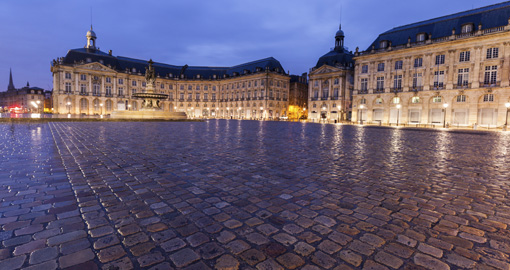
Bordeaux is a very interesting and attractive city well worth staying in for a few days on France tours. It is also, of course, a handy gateway for visits to the wine-growing areas just outside town. The first thing that impresses is the elegance of its many classical buildings from the 18th Century. Like Paris, it is the architecture which creates a charming ambience. An excellent example of this is the Place de la Bourse, built in the mid-1700s. Bordeaux Cathedral dates back to the 11th Century. You can climb the tower’s 231 narrow steps for spectacular panoramic views of the city. The Grand Theatre, built in 1780, is grand in every sense of the word, with its colossal columns and statues of Greek muses and goddesses. Bordeaux has its fair share of museums and art galleries which include the Musee des Beaux-Arts exhibiting Flemish, Dutch, and Italian paintings from the 17th century and the Bordeaux Wine and Trade Museum, which is located in the building of an old wine merchant. You can enjoy personal wine tastings here of wines of the region.
Biarritz
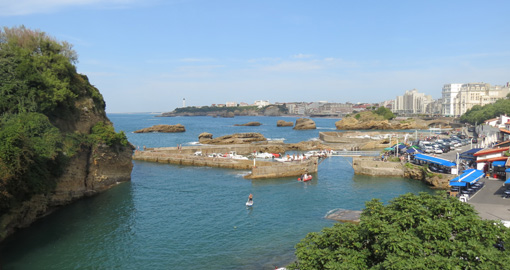
Biarritz is a fashionable resort on the Bay of Biscay in the French part of the Basque country. It offers large sandy beaches. One is the Grande Plage which, in the summer, is popular with sunbathers and swimmers. There are many upscale restaurants and cafés here. Situated on a headland at the end of the Grande Plage is the spectacular Hotel du Palais which was built by Emperor Napoleon III for his wife Eugenie. It is now a national monument. Another beach is the Plage du Miramar which has stunning scenery and large breaking waves. A third beach, Le Port Vieux is a small sheltered beach ideal for families. Besides beaches, there are elegant boulevards and squares which show off Biarritz’s aristocratic side.
Roman France
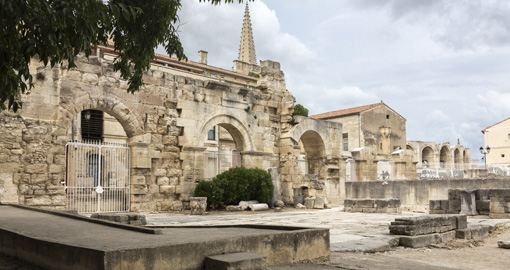
Major cities on trips to France which reflect the glory of the Roman occupation of this country are Nimes and Arles. The best preserved Roman remains are to be found in Nimes which has 6 Roman sites including the Maison Carree, a former temple and possibly the best-preserved one in the world, the Roman arena and other temples and city walls. Arles has the best overall collection of Roman remains in France which includes the arena, a theatre a necropolis and an aqueduct. Another outstanding Roman site is the Pont du Gard, the highest and best-preserved aqueduct in the Roman world.
Carcassonne
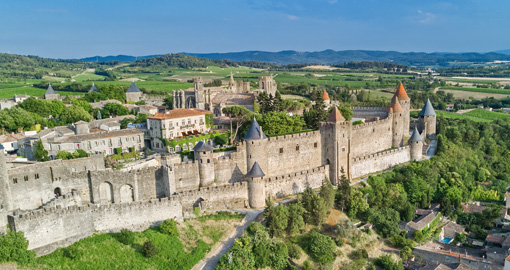
Carcassonne is an old fortified city with its fairytale-like hilltop fortress which has very thick walls and spiky turrets and is an ideal example of a medieval castle. Its origins go back over two thousand years. It has 52 towers and a drawbridge. Inside, are a maze of cobblestone lanes and courtyards lined with shops and restaurants. It is said the fortress inspired Walt Disney for the castle in his movie, “Sleeping Beauty”.
Cote d’Azur
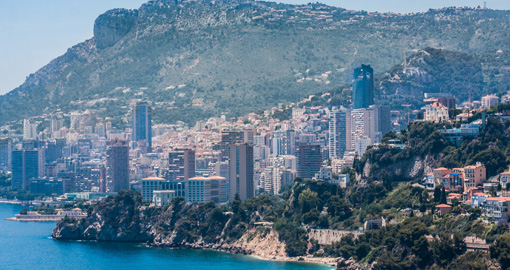
This is the most fashionable stretch of coastline in France on the Mediterranean Sea, also known as the French Riviera. It extends from Saint-Tropez to Menton near the Italy border. The “rich and famous” make their homes here in their upscale villas and luxury sailboats. Nice has panoramic sea views and outstanding art museums plus the Promenade des Anglais, a beautiful pedestrian walkway that meanders along the Baie des Anges beaches. Cannes is famous for its annual film festival, gourmet restaurants and stylish cafés which one can find on the seafront at the water's edge. The best sandy beaches are to be found in Antibes. Saint-Tropez also has great beaches which combine with the charm of a Provencal fishing village. It was made fashionable by the actress Brigitte Bardot in the 1950s while she was filming on location here. Monaco is an exclusive resort and monarchy which has a stunning harbour and scenery. The palace of the royal family is located on what is called the "Rock of Monaco”. It is also famous for its iconic casino. The picturesque resort of Menton has a perfect mild, sunny climate (the warmest on the Côte d'Azur). The most attractive part of Menton is the Old Town which has a distinctive Italian atmosphere.
French Alps
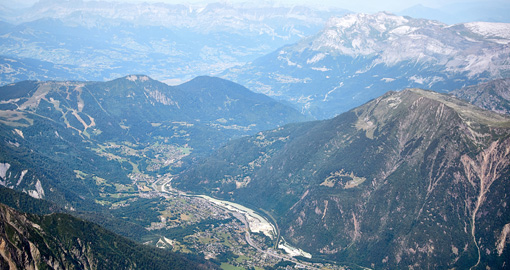
For nature lovers in summer and skiers in winter, this region is a must on France vacations. The scenery here is magnificent with dramatic mountains, crystal-clear lakes, tumbling waterfalls and pristine forests. This is the home of Europe’s highest mountain, Mont Blanc, which is covered in a veil of snow all year round. Chamonix is a very attractive resort which is ideal for skiing, hiking, climbing and golf. It is renowned for its upscale atmosphere and fancy boutiques. The village has many top-class restaurants as well as casual cafés and brasseries. Annecy is a lovely old town which is located on a quiet lake surrounded by snowcapped mountains. The town, with its cobblestone streets, is both quaint and charming with some of its houses dating back to the 16th Century. Aix-les-Bains is a picturesque resort town, also on a lake. It is known for its recuperative spas and peaceful atmosphere. The Musee du Docteur-Faure here, housed in a majestic villa, has an excellent collection of Impressionist paintings and Rodin sculptures. Val d’Isere is another excellent ski resort and because of its high altitude, remains open until May. The town is known for its lively après-ski scene.
The Wine Regions
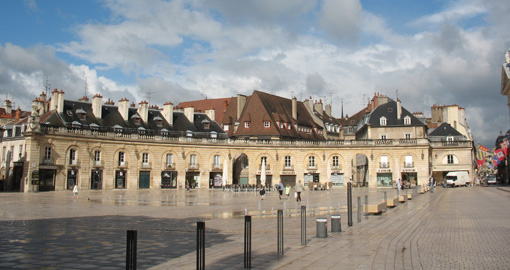
As a country, France is synonymous with wine. It produces between 7 and 8 billion bottles of wine per year. The Burgundy region is officially divided into 4 parts – Cote de Nuits, Cote de Beaune, Cote Chalonnaise, and Macon. Dijon is the capital city of the region and is known for its interesting architecture which ranges from Gothic to Art Deco. The well-preserved city centre has cobblestone streets, some wood-framed medieval houses, as well as some ornate 13th to 17th Century mansions. Beaune is the epicentre of the Burgundy wine region and a picturesque walled town surrounded by vineyards. The old town of Auxerre is located next to the picturesque River Yonne and contains wood-timbered houses and cobblestone streets.
The Bordeaux region is located in the southwest of France and became a very important wine exporter for centuries, although today, it does have rivals. The obvious choice for exploring the region and enjoying a fascinating and beautiful city is Bordeaux itself. It is not only extremely convenient for excursions into the wine-producing areas but is also a historical city which has been awarded UNESCO World Heritage status.
The Loire Valley is France’s second-largest producer of sparkling wines after Champagne. The abundance of vineyards and fruit orchards is to be found along the banks of the beautiful Loire River. The vineyards are spread out in the region, as the area stretches 280 kilometres/170 miles. There are a number of wonderful medieval towns and cities to spend time in such as Tours which is famous for its original medieval district called Le Vieux Tour, with its preserved half-timbered buildings. Orleans is the city of Joan of Arc, “The Maid of Orleans,” whose house has been recreated to resemble the original. Here you can find half-timbered medieval houses and a selection of museums.
The Champagne region is known for its “bubbly” but many sparkling wines could be called this. Any self-respecting French wine expert will tell you that champagne can only be called champagne if it is produced in the Champagne region. Reims is the largest city in the region and its major attraction is the Notre Dame Cathedral, which is a huge edifice towering over the city. Reims is home to the headquarters of Taittinger and Moet et Chandon, excellent places to learn exactly how champagne is produced.
The Alsace region is well-known for its white wines such as Riesling, Pinot Gris, and the very aromatic, fruity and spicy Gewurztraminer. Strasbourg is the European capital, and a visit here will charm you. The city centre has been awarded a UNESCO World Heritage listing. The imposing Notre Dame Cathedral dates back to the 12th Century with its beautiful stained-glass windows and tower which is the tallest cathedral tower in France. Colmar is the wine capital of Alsace. It is very quaint with its half-timbered houses, cobblestone lanes and bridge-laced canals. Riquewihr has been called one of the most beautiful villages in France. It remains unchanged over the centuries and has retained its character with its cobblestone streets, attractive courtyards, fountains, and brightly painted half-timbered houses.
Get a Trip Quote Order a Brochure

















